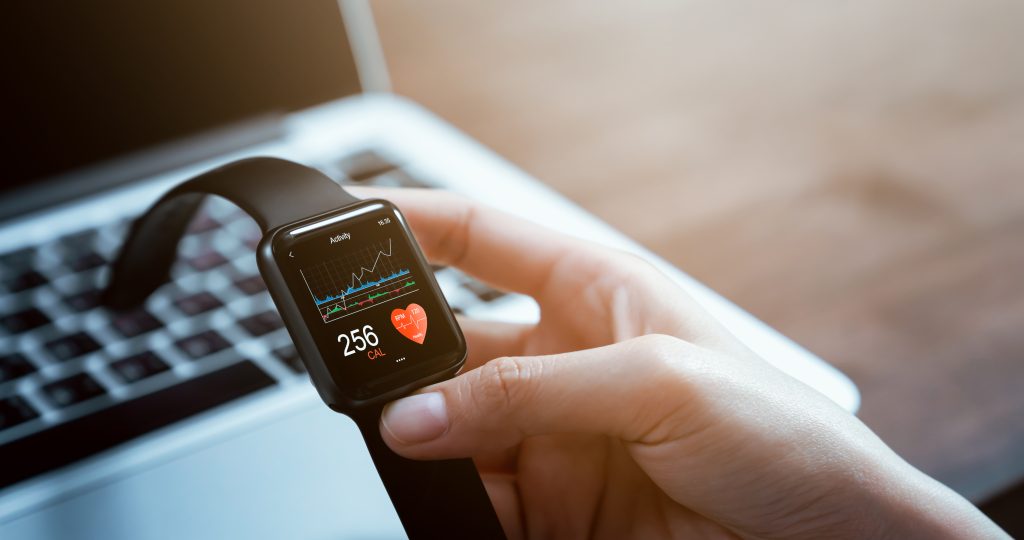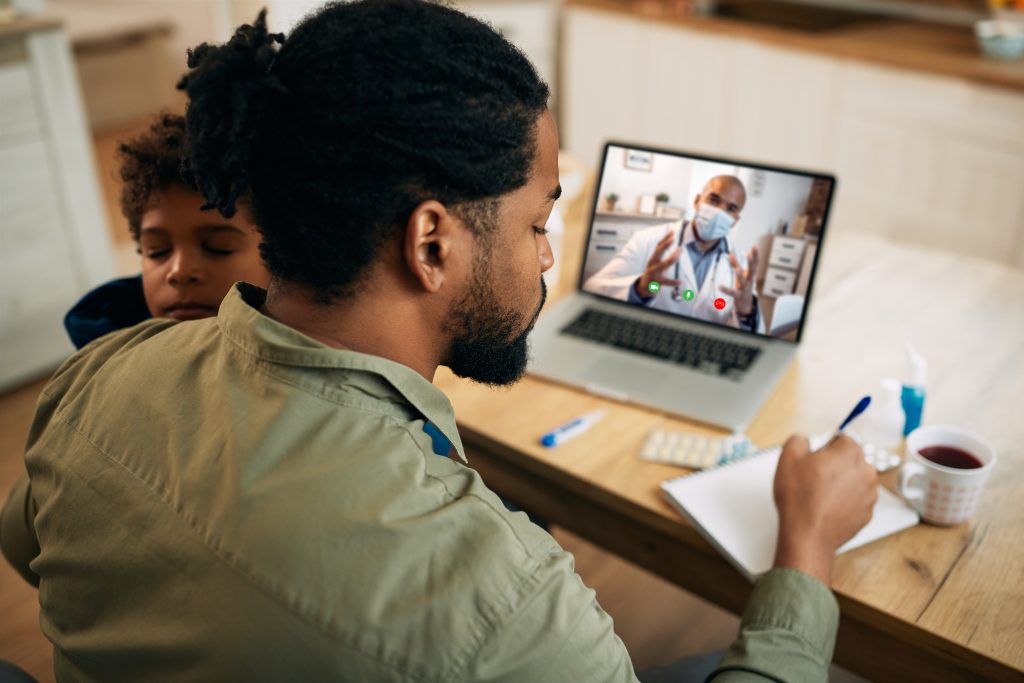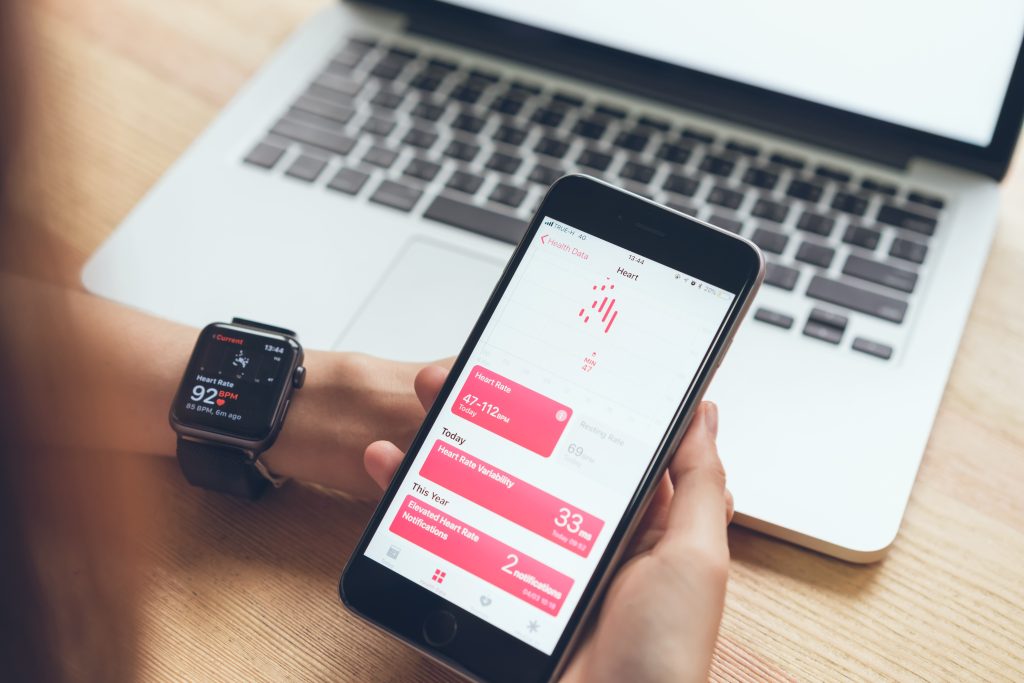
2021 has been a historic year for healthcare… and technology has been a crucial piece of the puzzle when it comes to keeping the healthcare industry resilient in the face of the challenges it has seen.
Whether it is in operational delivery, service provision, patient enablement or drug discovery, technology has continued to create wide scale impact as we shift towards a post-pandemic world.
We saw another record year for venture capital investment in health-technology startups, with around $51bn raised globally during the 12 months through to November. With the UK and US at the forefront of this growth, you can guarantee that we will see the boundaries of what is achievable across a range of therapeutic areas being challenged over the next 5 years.
But it’s not just the private sector where we have seen innovation, the NHS has also had a remarkable year — not only has it successfully delivered over 100 million COVID-19 vaccines in 12 months, its digital advancements have also been incredible.
The NHS app had a record 16 million registrations, making it the most downloaded free app in England. The app has successfully facilitated over 3.2 million repeat prescriptions, 270K GP appointment bookings and 1.5 million organ donation preference statements. It is a huge leap in digitising the patient experience to make it more efficient and accessible for everyone, wherever they are & at whatever time of day or night.
And it won’t stop there — the NHS is set to receive over £2bn of funding towards improving their IT and technology services over the next year… so our greatest post-war asset will continue to go from strength to strength.
But that was 2021, what about the new year..? Here are some of our predictions for 2022.

Using more wearables and connected devices
Wearables have been around for some time now, but the opportunities that they potentially bring to the patient experience are only getting more exciting.
As of 2021, mobile apps, wearables like smartwatches and other fitness bands are used by at least 27% of the British public, according to a YouGov poll. This number is only set to grow.
As we mentioned earlier, the UK has been a hub for VC investment in health tech startups last year, and London has been the epicentre for this. London health tech startups secured a staggering $2.9 billion in funding, and the fastest-growing subsector in London is remote monitoring and wearables, raising $345 million in 2021, which is 20 times more than what it was in 2016.
One of the largest rounds last year involving wearables companies included £58 million for femtech company Elvie. Some other wearable tech to look out for in 2022 is the ADAMM patch, set to be released this year. It is designed to be discreetly attached to the chest and monitor symptoms like respiration patterns, heart rate and skin temperature (among others) in order to help those with asthma to manage their condition more easily.
In Kenya, a prosthetic with life-changing potential was developed last year — the first bio-robotic arm controlled with brain signals. The signals are converted into an electric current by a “NeuroNode” biopotential headset receiver and are then sent into the robot’s circuit to produce motion.
Wearables give people immediate access and control when it comes to their health, and they have the potential to change the lives of those living with chronic illnesses or disabilities. We can certainly expect to see even more innovative wearable tech this year.

Prioritising remote care and wellness
Most healthcare providers have incorporated virtual check-ups and consultancies to make things easier for their patients. This trend initially picked up because of the pandemic, but it’s here to stay as a component of healthcare offerings for the convenience that it offers. The majority of respondents in our recent Patient Experience survey shared that they are happy to have online consultations about their health, except for things like physical injuries. But that is something that AR and VR technology have the potential to enhance in the future. Virtual appointments won’t entirely replace face-to-face consultations any time soon by any means, but they are a great option where appropriate and you can expect them to grow in popularity.
We mentioned that remote monitoring has been the focus of a large chunk of VC investment in London last year, and one of the companies that received funding was Huma — a remote patient monitoring system that promises to deliver better patient outcomes by providing greater access to care outside of a conventional setting, and empowering patients to better manage their health. Huma received a $130 million investment and is just one example of how we can expect to see remote patient monitoring transform patient outcomes in the future.

Harnessing the potential of data and Artificial Intelligence
Artificial Intelligence (AI) helps the shift to a more unified system of care that can rely on intelligence to harness analytics and inform decision making. This improves information processing, precision, efficacy and speed of diagnosis, and ultimately helps doctors by giving them thorough insights which can be translated into early or better treatment options, tailored to each patient.
In 2020, we saw the world’s first AI-developed medicine by drug discovery company Exscientia. Since their first compound DSP-1181, which was designed to help with OCD treatment, went into clinical trials, they have developed multiple other compounds using AI. This remarkable development in drug discovery is an indication that we should expect AI to be more involved in the drug development process in the future, making it faster and more efficient than ever. In fact, Exscientia stands by the claim that all drugs in the future will be made using AI.
AI’s capabilities help to unlock the value in health data, and Deloitte have called data “the new health care currency”. Data ultimately holds all of the potential, processing and combining it with the right tools and technologies is the best way to harness that potential. For example, using AI, Machine Learning (ML), Robotic Process Automation (RPA), Cognitive Automation (CA), cloud computing and a myriad of other technologies, especially in conjunction with one another, introduces next-level automation and leads to improved compliance, security, control and processing, all of which have knock-on effects for patients.
We can also use data to predict disease. In 2021, the fitness performance tracker WHOOP was able to predict COVID-19 infection before the users themselves noticed the onset of any physical symptoms by tracking changes in respiratory rate.
We can expect to see more innovations in the way that health service providers leverage data to produce better outcomes for patients in 2022, and we can definitely expect to see AI being more prevalent.

Adopting Virtual and Augmented Reality
The global virtual and augmented reality healthcare market is expected to reach $9.5bn by 2028. VR and AR have wide applications in healthcare — from the treatment of general pain to anxiety, Post-traumatic stress disorder (PTSD), and stroke. VR not only has the potential to make treatment for patients easier, it is also a powerful educational tool. Healthcare professionals in training can use VR simulations to hone their skills and practice complex procedures before applying their knowledge to real-life situations.
Imperial College London, for example, has developed a medical simulation using interactive holograms that allow radiology trainees to learn new skills using augmented reality headsets. The university is working on a range of uses for XR in education. Research ranges from Virtual 3D assessment scenarios for anatomical education, to the use of augmented reality for extremity reconstruction surgery.
In 2022, we should expect to see more VR and AR technology adopted in healthcare training environments, as well as for patients who require physical assistance.

Creating omni-channel experiences
Healthcare providers have accelerated their digital transformations over the last few years and added more channels, including self-service portals, electronic forms, virtual video calls, and social media content to support remote patient interactions with healthcare professionals. Creating a seamless experience is very important in healthcare — providers should be offering non-disruptive journeys, regardless of the platform or device.
When it comes to devices, whether it’s phones, tablets, desktops, adopting an omni-channel strategy is the best way. Mobile is one to especially focus on — according to Statista, nearly 57% of all internet traffic around the world today can be attributed to mobile devices. Just over a decade ago, in 2010, more than 97% of all traffic came from desktop computers. And whilst the distribution today isn’t equally spread globally, for example in Africa and Asia nearly 70% of all internet traffic comes from mobile, whereas Europe and North America sit just under 50%, the trend is still obvious — people want to have access and convenience at their fingertips. Whether that be fitness and nutrition data or COVID-19 passes, they should be able to access it wherever they like.
To conclude…
Innovation within healthcare is helping to transform the patient experience.
The response to COVID-19 has been a huge factor in a lot of recent developments, and another great thing to look out for this year, especially if you have a fear of needles, is the needle-free COVID-19 vaccine. Developed by Professor Jonathan Heeney of Cambridge University to be pain-free and more effective against new variants, it is currently in trials and is expected to be released sometime in 2022.
We can definitely expect to see more digital tools and innovative tech in the healthcare space in 2022. Self-management and patient empowerment will be strong themes across all of the trends that we’ve covered. At Waracle, we’re keeping up to date with all of these trends, and our talented teams have been working on projects across the spectrum of healthcare.
If you want to dive deeper into why patient empowerment is so important today and how digitisation is helping to further it, tune in to our Empowering Patients event on the 27th of January, which is part of our Patient Experience series. And if you’re interested in learning more about how new technologies can transform your digital health offering in 2022, let’s get the conversation started.





